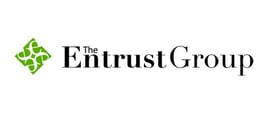Determine and Fulfill Your RMD
Confirm, calculate, then fulfill.
Required minimum distributions (RMDs) play a crucial role in retirement planning, ensuring you begin withdrawing from your tax-deferred retirement accounts once you reach a certain age. These withdrawals help fulfill IRS requirements for retirement accounts like traditional IRAs, SEP IRAs, SIMPLE IRAs, and other tax-deferred accounts.
In this guide, we’ll outline the steps to determine your RMD amount and outline your options for fulfilling an RMD through the Entrust Client Portal.
Step 1: Confirm Whether You Have an RMD This Year
Before calculating your RMD, you first need to determine if you’re required to take one. Each year, Entrust notifies clients who may need to fulfill an RMD. In general,
- You must take an RMD if you have a traditional, SEP, or SIMPLE IRA with pre-tax funds and have reached age 73.
- You may need to take an RMD if you inherited an IRA; the inherited IRA rules are complex, so this will come down to your unique circumstances.
If you’re unsure whether you need to take an RMD this year, contact our Client Services Team at clientservices@theentrustgroup.com or (800) 392-9653, option 1.
Step 2: Calculate Your RMD
Once you’ve confirmed that you have an RMD requirement, the next step is determining your RMD amount. You can do this in one of two ways.
Option A: Contact Entrust for Your RMD Calculation
While you cannot see your RMD amount in the Entrust Client Portal, our team can calculate it for you. If you know that an Entrust account of yours requires an RMD, call (800) 392-9653, option 1 or email info@theentrustgroup.com to request your RMD amount.
Option B: Calculate Your RMD Manually
You can also calculate your RMD using one of two IRS RMD tables:
- If your spouse is your account’s sole beneficiary and is more than 10 years younger, use the Joint Life and Last Survivor Expectancy Table.
- Otherwise, use the Uniform Lifetime Table.
Find your RMD amount by dividing your December 31 prior-year account balance by the distribution period for your age.
For Example:
You’re 75 and your traditional IRA had a year-end balance of $500,000. Your spouse is the sole beneficiary of your account; however, they are not more than 10 years younger than you. So, you must use the Uniform Lifetime Table. Age 75 gives you a distribution period of 24.6, so your RMD for that year is $20,325.20.
Remember, if you have an inherited or beneficiary IRA, the calculation process is different. If this is the case, work with a CPA or financial advisor to determine your RMD.
Step 3: How to Fulfill Your RMD
Once you determine your RMD amount, you must withdraw it from your IRA by December 31 each year. That is, except for your first RMD. For your first RMD, you may delay taking the RMD until April 1 of the following year.
For example, let’s say you turned 73 on July 15, 2024. You must take your first RMD by April 1, 2025. You must take your second RMD by December 31, 2025, and your third RMD by December 31, 2026.
Option A: Fulfill Your RMD from Another IRA
If you have multiple traditional, SEP, or SIMPLE IRAs, you can take your total RMD from just one of those IRAs.
For example, if your RMD is $4,000 for an IRA at Entrust and $3,000 for a SEP IRA at another custodian, you don’t have to withdraw from each account separately. Instead, you can withdraw the combined total of $7,000 from just the SEP IRA, and you’ll have met your total RMD requirement for the year.
Note: This rule does not apply if you have an inherited IRA. RMDs from inherited IRAs must be taken separately from each inherited account. You cannot combine or aggregate these distributions with RMDs from other IRAs.
If you take an RMD from an account outside of Entrust, you do not need to notify us. The 1099-R form generated by your other custodian will automatically report the distribution to the IRS.
Option B: Take a Cash Distribution from Your Entrust IRA
If you have enough cash in your Entrust IRA, you can withdraw it directly:
- Log in to the Entrust Client Portal, scroll to the “Quick Links” box, and click “Take Distribution.”
- Select the account and choose “Partial Distribution” (Full Distribution would close the account and incur a $250 termination fee).
- Choose “Cash Distribution” and follow the on-screen instructions.
Option C: Sell an Asset to Generate Cash for Your RMD
If your IRA is fully invested in assets, has no available cash, and you’ve already maxed out your contribution limits for the year, you could liquidate an asset:
- After logging in to the Entrust Client Portal, navigate to the “Quick Links” box and click “Sell Asset.”
- Select your account and the asset to sell.
- Download the Sell Direction Letter for that asset, complete, and submit according to the instructions on the form.
- Once the asset is sold and funds are available, take a cash distribution (See Option 2).
Option D: Take an In-Kind Distribution
An in-kind distribution allows you to transfer ownership of an asset from your IRA to yourself instead of selling it. For example, rather than liquidating real estate or gold for cash, you could instead distribute a portion of the asset from your IRA to your personal accounts.
To request an in-kind distribution:
- Log in to the Entrust Client Portal, scroll to the “Quick Links” box, and click “Take Distribution.”
- Select the correct account, choose “Partial Distribution,” and select “In-Kind Distribution.”
- Select the asset and specify the portion to be transferred.
- Download the required Fair Market Valuation (FMV) form, fill it out, and upload it in the portal.
- Submit your request.
Once processed, you will receive a change of ownership document, finalizing the distribution.
Option E: Request an RMD Waiver
If you cannot fulfill your RMD due to financial hardship, you may be able to request a waiver from the IRS. Entrust is not involved in this process. If this is the route you’d like to take, consider working with a CPA or financial advisor to file the IRS Form 5329 to request a waiver.
Final Notes on RMDs
- Remember that the deadline to take your RMD is December 31.
- If you turn 73 this year, you have until April 1 of the following year to take your first RMD. However, delaying it means you will have to take two RMDs in the following year.
- Failure to take your RMD can result in a penalty of up to 25% of the required amount.
By following this guide, you can determine and fulfill your RMD through the Entrust Client Portal.






